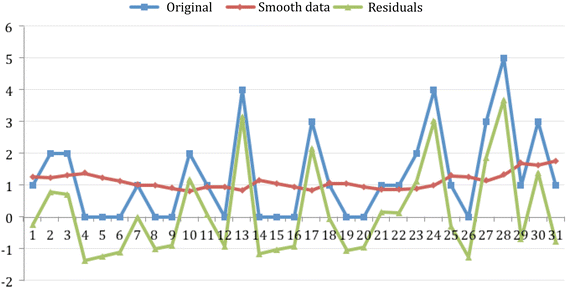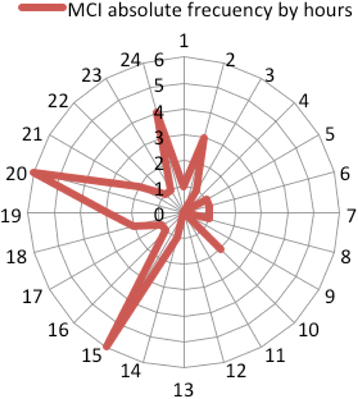An epidemiological approach to mass casualty incidents in the Principality of Asturias (Spain)
- PMID: 26911474
- PMCID: PMC4765155
- DOI: 10.1186/s13049-016-0211-x
An epidemiological approach to mass casualty incidents in the Principality of Asturias (Spain)
Abstract
Background: Mass Casualty Incidents (MCI) have been rarely studied from epidemiological approaches. The objective of this study is to establish the epidemiological profile of MCI in the autonomous region of the Principality of Asturias (Spain) and analyse ambulance deployment and severity of patients.
Methods: This is a population-based prospective study run in 2014. Inclusion criteria for MCI is "every incident with four or more people affected that requires ambulance mobilisation".
Results: Thirty-nine MCI have been identified in Asturias in 2014. Thirty-one (79%) were road traffic accidents, three (7.5%) fires and five (12.8%) other types. Twenty-one incidents (56.7%) had four patients, and only three of them (8%) had seven or more patients. An average of 2.41 ambulances per incident were deployed (standard error = 0.18). Most of the patients per incident were minor injured patients (mean = 4; standard error = 0.2), and 0,26 were severe patients (standard error = 0.08). There was a positive significant correlation (p < 0.01) between the total number of patients and the total number of ambulances deployed and between the total number of patients and Advanced Life Support (ALS) ambulances deployed (p < 0.001). The total number of non-ALS ambulances was not related with the total number of patients.
Discussion: Population based research in MCI is essential to define MCI profile. Quantitative definition of MCI, adapted to resources, avoid selection bias and present a more accurate profile of MCI. As espected, road traffic accidents are the most frequent MCI in our region. This aspect is essential to plan training and response to MCI. Analysis of total response to MCI shows that for almost an hour, we should plan extra resources for daily emergencies. This data is an important issue to bear in mind when planning MCI response. The fact that most patients are classified as minor injured and more advanced life support units than needed are deployed shows that analysis of resources deployment and patient severity helps us to better plan future MCI response.
Conclusions: Road traffic accidents with minor injured patients are the most frequent MCI in our region. More advanced life support units than needed have been initially deployed, which might compromise response to daily emergencies during an MCI.
Figures




References
-
- World Health Organization. Mass casualty management systems: strategies and guidelines for building health sector capacity. Geneva, 2007.
-
- L Blom, JJM Black. Major incidents. BMJ 2014; 348:doi:10.1136/bmj.g1144. - PubMed
-
- Castro Delgado et al. The registry of multiple casualty incident of north Spain. North Spanish Disaster working group. (In Spanish). XXVI National Congress of Emergency Medicine. Abstract book, page 24. Málaga, 2014
-
- Directive 2012/18/EU of the European Parliament and of the Council of 4 July 2012 on the control of major-accident hazards involving dangerous substances, amending and subsequently repealing Council Directive 96/82/EC
-
- British Standards Institution (BSI). Medical vehicles and their equipment. Road ambulances. BS EN 1789:2007, 2007
Publication types
MeSH terms
LinkOut - more resources
Full Text Sources
Other Literature Sources
Medical
Research Materials
Miscellaneous

